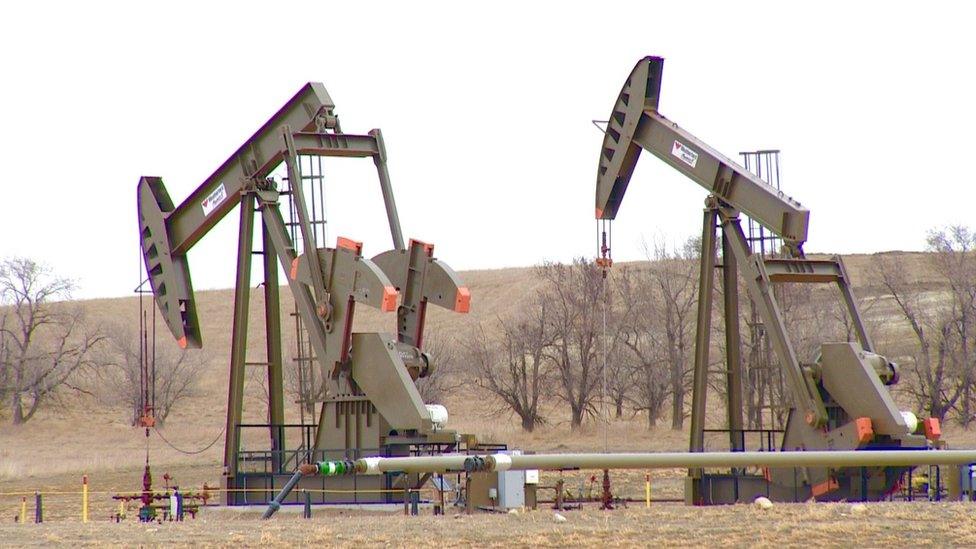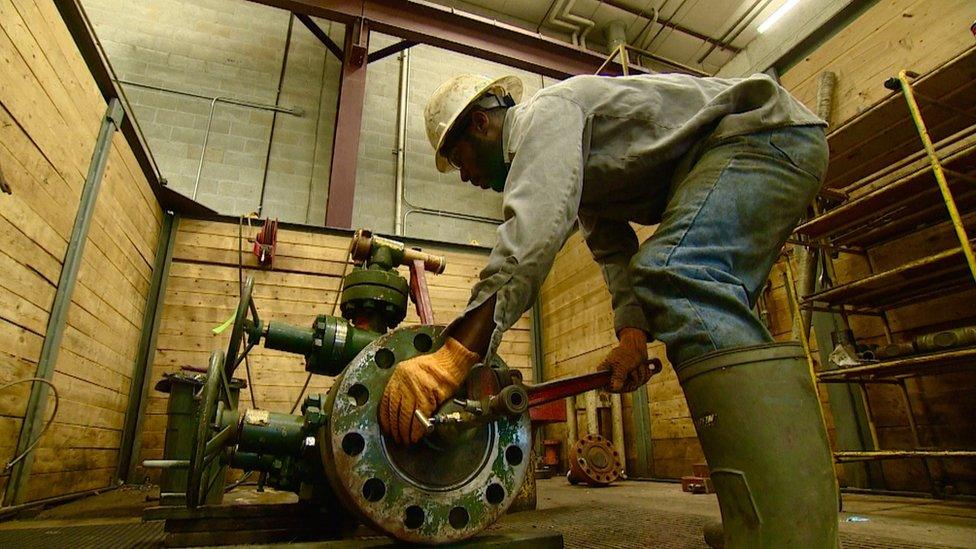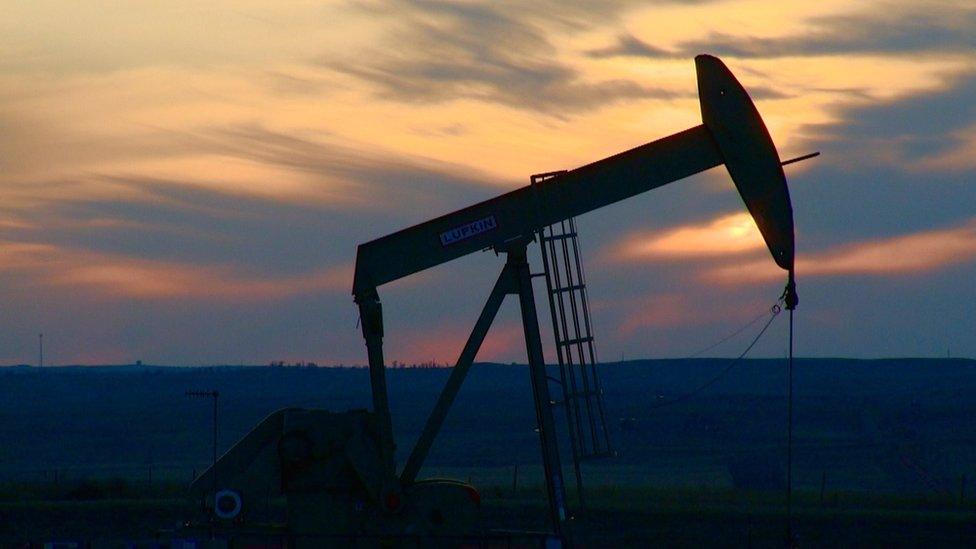Why North Dakota is running on empty
- Published

Many of those who came here to work in North Dakota's oil industry have now gone home
A billboard erected just off the highway reads "Welcome to Williston, ND. Boomtown, USA". But for this once-thriving oil city the boom is going bust.
In the mid 2000s hydraulic fracturing - or fracking - coupled with soaring oil prices, made it possible to unlock billions of barrels of oil from the rocky Bakken formation, one of the largest deposits of oil and natural gas in the country.
Almost overnight, the former backwater of Williston transformed into the unofficial capital of America's energy renaissance, experiencing unprecedented economic growth.
As oil workers flocked to the region, its population exploded, salaries ballooned, fancy new buildings appeared and chain stores arrived.
Now, with oil prices falling well below $50 a barrel Williston has become a ghost town. Many of the men who came here to work have packed their bags and gone home.
'Pretty slow'
One of those who stayed behind is Brad Selander, a self described roughneck - the term used for an oil rig worker. He's been working the tough, dusty oil fields for 16 years, and he can remember when things started to take off.
Inside a US oil 'man camp'
"Everything went nuts."
Word soon spread that there was money to be made in North Dakota.
"It started as a trickle and then it turned into a massive flood of people," he says.
Mr Selander has lived through temporary lulls before - like the one that hit in 2009. So when prices began to slump again, he thought it wouldn't last long. He was wrong.
"It has been pretty slow for me for over a year now."
Lower royalties
And lifelong North Dakotans haven't been spared either.
Loren Dvirnak has several oil pumps on his farm in Killdeer, North Dakota. Some of the wells are named after his grandchildren: there's the MicahLucas and the Nadia.
All generate a monthly royalty cheque from Continental Oil. The payment, however, isn't what it used to be.
"If oil prices were what they were two years ago, our royalty cheques would be about two and a half times what they are now," he says.

Farmer Loren Dvirnak says he never counts on the royalties from oil wells on his land
Mr Dvirnak isn't worried, though; having lived through previous oil boom and busts, he never counted on this money.
"I've been around oil long enough to know that even if you have a well it could be plugged in a month. Those royalties could end."
The history of oil is filled with ups and downs. During the good times there are windfall profits, but during lean years oil companies make less money.
'US shale versus Opec'
The factory floor at Canary, America's largest independent manufacturer of wellheads, used to be a traffic jam of forklifts. Today a single machine putters around.
Like many oil services companies, Canary has been forced to save money any way it can. Chief executive Dan Eberhart has cut staffing levels by half and has had to limit overtime shifts. There have also been several rounds of salary reductions, including his own.
"It's really been tough", he says.
And yet like many in the fracking industry, Mr Eberhart isn't ready to throw in the towel.
He argues that America's shale industry needs to get more competitive to "try to win this kind of battle royal that we have going on with Opec right now; US shale versus Opec."

Oil services firm Canary has cut staffing levels by half
If this were a boxing match, it's not clear what round we'd be in.
For nearly two years, Opec has been engaged in a price war with US shale producers. But the group of oil producing countries has yet to land a knockout punch.
Instead of bankrupting many US shale producers and investors, they have adapted by scaling back investments.
American drillers have also been forced to cut costs. For Mr Eberhart, that has meant finding ways to do jobs cheaper.
"It's put a tremendous amount of pressure on us."
Efficiency increase
Yet for all the challenges, he believes US shale producers have shown their resilience. He cites the "bit part" his firm has played in helping customers reduce the price of drilling a well by as much as 30 to 40%.
And that increased efficiency is evident from the numbers.
Currently there are 30 active drilling rigs in the region, says North Dakota's state government, external. On the same day back in 2012, there were 208.

North Dakota may have fewer oil rigs, but its oil output levels are being maintained
Yet even as the state has lost drilling rigs, oil has continued to flow.
Daily production was 1.12 million barrels a day in January, external, says Lynn Helms, director of the state's mineral resources department. That's not far off the all time high of 1.22 million barrels a day in December 2014.
While nobody is talking about a return to the days of the gold rush that helped shape America's west, energy companies and workers who remain in North Dakota are betting this slump will end.
The question is, when? And will anyone be left in Williston when it does?